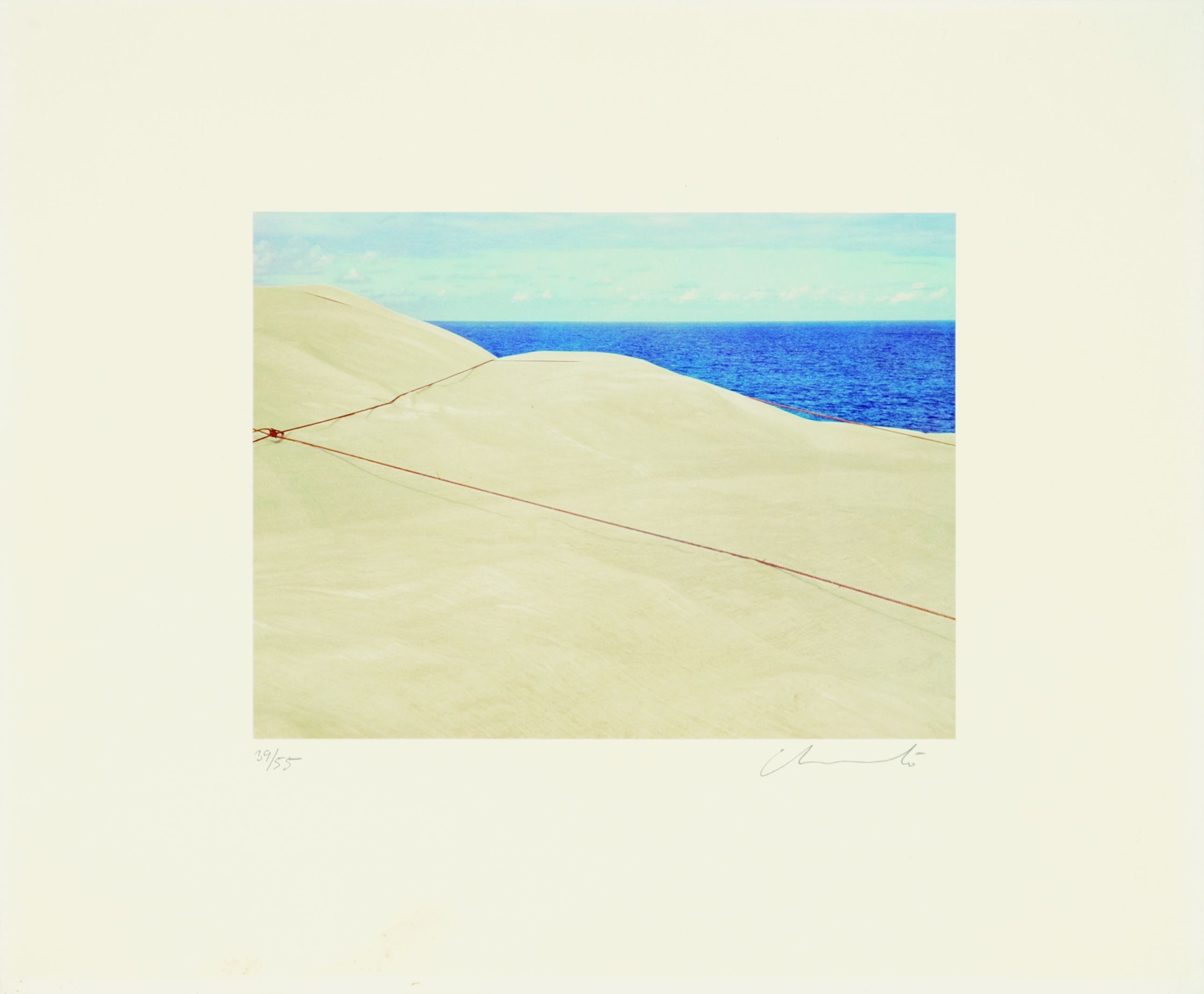Colour lithograph on cardboard
From the folder LANDSCAPES (with one graphic each by Christo, Jan Dibbets, Richard Hamilton and Dennis Oppenheim)
Dimensions: 33 x 40 cm
Signature, inscriptions, markings: signed at lower right, numbered at lower left
Copy Number: 39/55
Accession Number: 1001416
The artist couple Christo and Jeanne-Claude are known for their spectacular wrappings, such as that of the Reichstag in Berlin (1995) or the trees in New York's Central Park (2005). The idea of a wrapped coast, Wrapped Coast, Little Bay, Australia, documented in the 1969 lithograph, was realized the same year, with the support of John W. Kaldor. Together with 15 professional climbers and 110 workers, mostly art students, the 26-meter-high northern cliffs and southern beach of Little Bay, near Sydney, were wrapped in 23 days and 17,000 man-hours with 56 kilometers of rope and 92,900 m2 of Sarlon Erosion Control Mesh, a straw-colored, highly reflective synthetic fabric. A gigantic project, then, not only in terms of the enormous amount of labor and materials involved, but especially because of the unexpected public interest and crowds of visitors.1
With this knowledge, one looks at the lithograph differently and no longer sees the sand-colored fabric tied up with red rope merely as a package. One can imagine the puffing of the fabric by the wind and the voices of the visitors. The shadows under the ropes seem to vibrate as the view slides out to the waves of the dark blue sea and the light blue, slightly cloudy sky. The small section of the shrouded rocky beach forms in the imagination into a huge surface under which loose stones and small caves are hidden, while the high rocks lose their imposance and appear only as slight elevations.
Shrouding means hiding, and it is precisely when the everyday becomes mysterious that one begins to become aware of it. What did the coast look like before? What is hidden under the fabric? Christo manipulates space by wrapping it, thereby giving visitors a new awareness of their surroundings. The packaging as wrapping has, like the curtain in the theater, the function to convey a moment of reflection, or, as in marketing, to highlight an object. Not only goods can be sold better in the appropriate wrapping, but also nature comes into view again in the right wrapping. Where the mere presence is no longer able to impress the eyes, the wrapping reawakens our attention.
Veronika Berger
1 Jörg Schellmann; Joséphine Benecke, Christo und Jeanne-Claude. Druckgraphik und Objekte 1963-95, Werkverzeichnis, München (2) 1995, S. 96 f. (WV Nr. 76).
